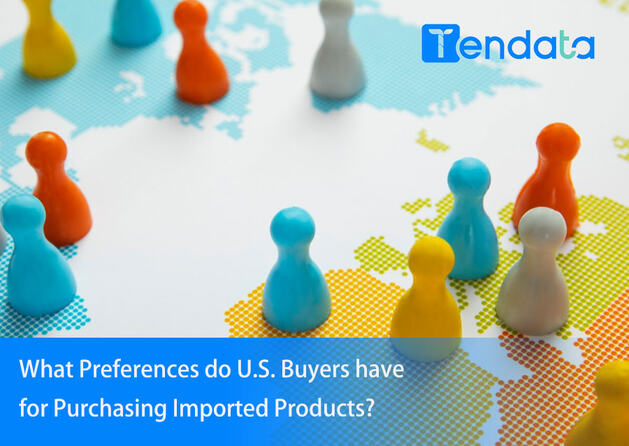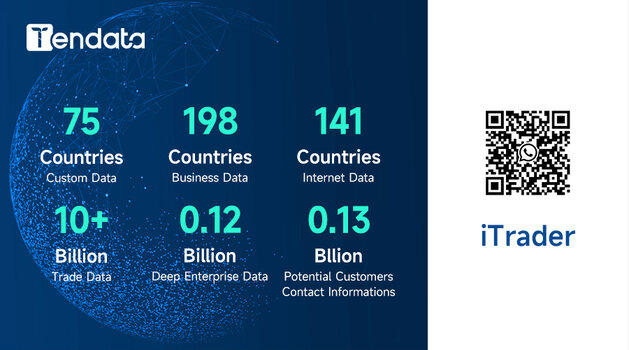 Trade Data Provider
Trade Data Provider
 2023-11-07
2023-11-07
In an increasingly globalized world, the import of products plays a pivotal role in the U.S. economy. American consumers have access to a wide range of imported goods, from electronics to clothing and food products. Understanding the preferences of U.S. buyers when it comes to purchasing imported products is crucial for businesses and policymakers alike. In this article, we will explore the current state of import in the U.S., analyze emerging trade trends, and delve into the factors that influence U.S. buyers' choices when it comes to imported products.

The Current Landscape of Import in the U.S.
Import Overview
The United States is one of the world's largest importers of goods, with a diverse range of products flowing into the country. The import industry has grown significantly over the years, making the U.S. a hub for international trade. In 2021, the total value of U.S. imports reached approximately $2.8 trillion, according to the United States International Trade Commission (USITC). This vast import market is driven by consumer demand, manufacturing needs, and supply chain efficiencies.
Major Import Partners
China, Mexico, Canada, and the European Union are among the U.S.'s major import partners. Chinese products, in particular, make up a significant portion of U.S. imports, with electronics, machinery, and apparel being some of the top categories. This strong trade relationship with China has had a significant impact on U.S. consumers' access to imported products.
Emerging Trends in U.S. Import Business
E-commerce and Direct-to-Consumer (DTC) Imports
The rise of e-commerce platforms and direct-to-consumer (DTC) brands has transformed the import landscape. U.S. buyers are increasingly purchasing products from foreign retailers and manufacturers, thanks to the convenience of online shopping. These businesses often ship products directly to consumers, bypassing traditional retail channels. The prevalence of DTC imports has given consumers access to a wider variety of products and a more personalized shopping experience.
Sustainability and Ethical Sourcing
Sustainability has become a significant concern for U.S. consumers. Buyers are increasingly looking for imported products that adhere to ethical and environmental standards. They want assurance that the products they purchase are produced in a sustainable and socially responsible manner. Companies that can demonstrate eco-friendly practices and ethical sourcing are more likely to attract U.S. consumers.
Economic Factors and Price Sensitivity
Economic conditions play a vital role in U.S. buyers' preferences for imported products. Buyers are often price-sensitive, looking for value and quality in their purchases. Economic factors, such as exchange rates and tariffs, can impact the affordability of imported goods. Understanding these economic dynamics is crucial for both buyers and sellers in the import business.
Product Quality and Innovation
U.S. buyers have a reputation for seeking high-quality products. When it comes to imports, they are often drawn to innovative and unique offerings. Companies that can offer products with cutting-edge technology, design, or features have a competitive advantage in the U.S. market. Buyers appreciate products that stand out in terms of quality and innovation.
Factors Influencing U.S. Buyers' Preferences for Imported Products
Brand Reputation and Trust
Brand reputation and trust are significant factors influencing U.S. buyers' choices when it comes to imported products. Recognizable and reputable brands from other countries often have an edge in the U.S. market. Buyers are more likely to choose products from brands they are familiar with and trust.
Consumer Reviews and Recommendations
In the age of the internet and social media, consumer reviews and recommendations have a powerful impact on U.S. buyers. Before making a purchase, consumers often read reviews and seek recommendations from friends, family, and online communities. Positive reviews can significantly boost the popularity of imported products.
Global Trends and Cultural Preferences
U.S. buyers' preferences for imported products are influenced by global trends and cultural preferences. For example, the rising interest in international cuisines has led to an increased demand for imported food products. Similarly, trends in fashion and lifestyle can drive the popularity of imported clothing and accessories.
Local Availability and Convenience
The availability of imported products at local stores and online marketplaces plays a crucial role in U.S. buyers' decisions. Buyers often prefer products that are readily available and convenient to purchase. Businesses that can provide easy access to imported goods are more likely to attract U.S. consumers.
Legal and Regulatory Compliance
U.S. buyers are increasingly conscious of legal and regulatory compliance. They want assurance that imported products meet U.S. safety and quality standards. Companies that can demonstrate compliance with U.S. regulations and provide transparent information about their products have a competitive advantage in the market.
Conclusion
Understanding U.S. buyers' preferences for purchasing imported products is essential for businesses and policymakers looking to thrive in the global import market. The current landscape of U.S. import business is characterized by diversity and growth, with emerging trends such as e-commerce, sustainability, and economic factors shaping the market. Factors like brand reputation, consumer reviews, global trends, local availability, and regulatory compliance play pivotal roles in influencing U.S. buyers' choices. Staying attuned to these preferences and trends is crucial for businesses looking to succeed in the competitive world of imported products in the United States.
Customer development is always a primary focus for us in international trade. Having customers leads to orders. But if we're looking to start a business or expand our development channels, what are the available avenues for customer development? And what are the characteristics of these customer development channels?
The traditional undifferentiated marketing approach mostly involves extensive investment to achieve broad coverage. In the Marketing 1.0 era (Industrial Age) and the Marketing 2.0 era (Internet Age), the marketing demand of companies is to precisely locate their target customers within a massive audience (or potential audience). They also need to understand the procurement-supply relationships, price ranges, purchasing frequency, and style preferences of these target customers. This is akin to finding a needle in a haystack.

Tendata can assist foreign trade enterprises in better customer development. Once a company has precisely targeted a market (or region) using Tendata's data, the next step is to further pinpoint high-quality customers within that market, creating customer "profiles" and filtering out target customers that match one's own supply capabilities. (>>>Click to Develop New Customers)
Category
Leave Message for Demo Request or Questions


 T-info
T-info T-discovery
T-discovery

 My
Tendata
My
Tendata Market Analysis
Market Analysis Customer
Development
Customer
Development Competitor
Monitoring
Competitor
Monitoring Customer Relationship
Customer Relationship





































































































































